Join Groomsport Parish Church
The History of Groomsport Parish Church
The Parish Church is picturesquely sited in the village of Groomsport, overlooking the sea. It holds a special place in the history of Northern Ireland’s rural architecture.
The “Chapel of Ease”, as it was when built in 1841, was one of sixteen churches built with funds supplied by the Church Accommodation Society, started by Bishop Richard Mant. The site in Groomsport was a gift from Mr John Waring Maxwell of Finnebrogue, near Downpatrick. His summer residence was the nearby Groomsport House. The architect was the famous designer Sir Charles Lanyon, architect of the then Queen’s College (which later became Queen’s University), who gave his services free to the Society.
On November 26th 1842, the Bishop issued a Licence to the Rev Richard Binney. ‘Incumbent of the Parish of Bangor and his Curates publicly to celebrate Divine Service and to Administer Holy Sacraments in Groomsport Church.’
The first service was held on December 11th 1842.
For some unknown reason, the Church was not Consecrated until February 2nd 1850.
The Parish comprises 3,252 acres – see Boundary map below. It begins at Ballymaconnell Road, Bangor, passes along the coast, taking in the Townlands of Ballymacormick, Groomsport, Lower Balloo, Ballyminetra, Orlock, Portavoe, and, crossing the B21 Bangor-Donaghadee Road, takes in Ballyfotherly. It also includes the Copeland Islands.
When J W Maxwell gifted the site, it was on condition that “burials are expressly prohibited either in the Church or the Churchyard”. Another condition imposed was “That the Church shall be called Groomsport Church”. It seemed that if at any time in the future, the Rector and the Select Vestry wished to call the Church after a Saint, there would be difficulty in so doing.
The Church, as designed by Lanyon, was initially built with a Nave only, and with an Entrance Porch in the base of the Tower. It had seating for one hundred and thirty parishioners. In 1909 the Chancel was added in memory of Major Robert Percival Maxwell. On that occasion, additional pews were installed and the flat ceiling was replaced by the present hammer-beam roof. The West window, which was designed by Mayer of Munich, was installed in memory of Robert and his brother John William Percival Maxwell who had died in 1873 and 1875 respectively.
The total cost of the building in 1841 was £750. Half of this sum was given by the Church Accommodation Society, along with a generous donation and an endowment of £100 per year from Mr J W Maxwell, with the balance falling to the building fund. At this time a Church Bell was given as a gift. It bore the inscription ‘Presented by Mr J W Maxwell, Esq R E of Finnebrogue, to Groomsport Church. Thomas Mears, Foundry London 1843’. A copy of the receipt for this bell is shown in the photos on this page. A Church plate was also presented as a gift from Lady Selina Ker of Portavoe, a daughter of the first Marquis of Londonderry, and a half-sister of Viscount Castlereagh. In 1932 when the Transepts, designed by local architect JA Hanna, were consecrated, Lady Selina’s Grandson, Major D A Ker of Portavoe was the People’s Churchwarden.
On November 26th 1842, the Bishop issued a Licence to the Rev Richard Binney. ‘Incumbent of the Parish of Bangor and his Curates publicly to celebrate Divine Service and to Administer Holy Sacraments in Groomsport Church.’
From 1842 until 1853 the services in Groomsport Church were conducted by the Clergy of the Parish of Bangor. From 1853 onward, the Groomsport Incumbents were as follows:-
1853-1880: Abraham Hillhouse McCausland.
1880-1892: Frederick John Hearne.
1892-1894: William Lawerence Twist-Whatham.
1894-1913: Samuel Stephen Holmes.
1913-1938: Ernest Musgrave Harris
1938-1944: George Freeman.
1944-1968: Charles Hay Walsh.
1968 -1975: James Edward Moore.
1975-2000: James Derrick Tyney.
2000-2022: Duncan Pollock.



Groomsport Parish Church Boundary

With Reference to;
C.D.Patterson; The parish Church Groomsport, 1842-1934.
R.B.Mowat; Groomsport Parish Church,1842-1992.
U.H.A.S. LIST Bangor and Groomsport; Marcus Patton. 1984
Newtownards Chronicle 24.12.1932
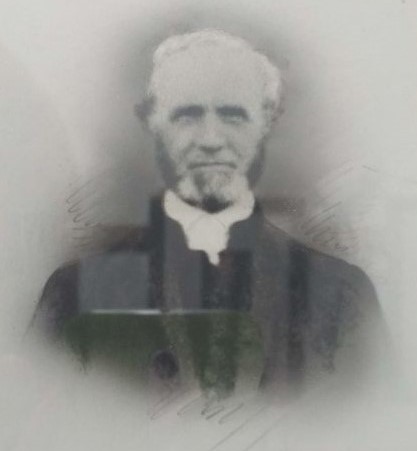
The Reverend Abraham H. McCausland, Rector of Groomsport 1853-1880.
Days Gone By
In the photo of the first wedding in 1865, the older of the two men sitting, is John Waring Maxwell, our founder and Grandfather of the Bride. The other man seated, is the Groom. There is a possibility that it is the Maxwell/Perceval wedding. However it is a large wedding and therefore significant. The setting for the photograph is the lawn in front of Groomsport House, with the Parish Church in the background.

1865
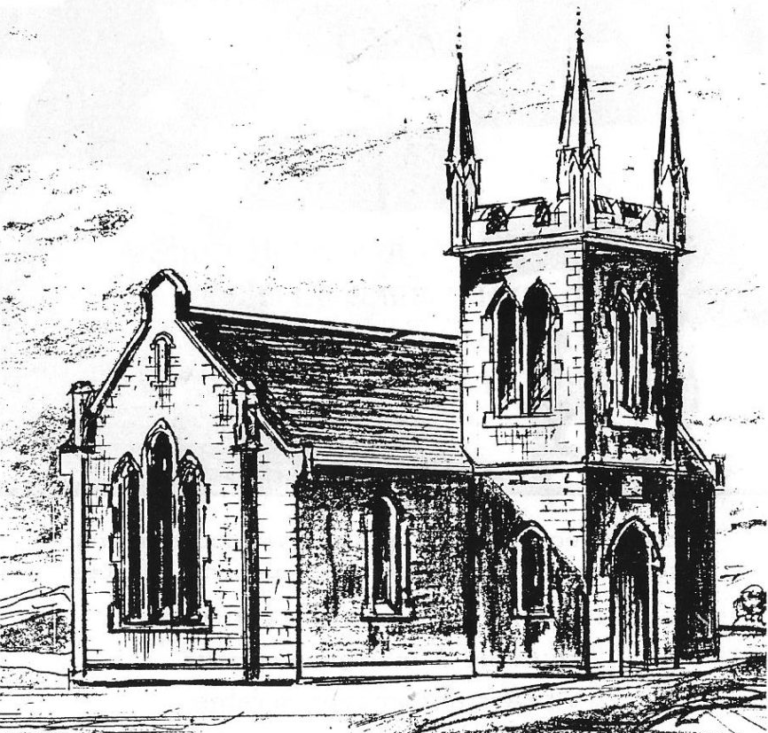
The Bell
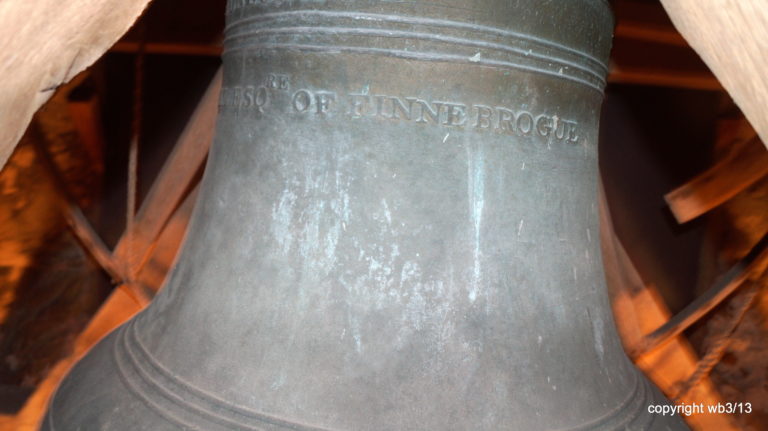
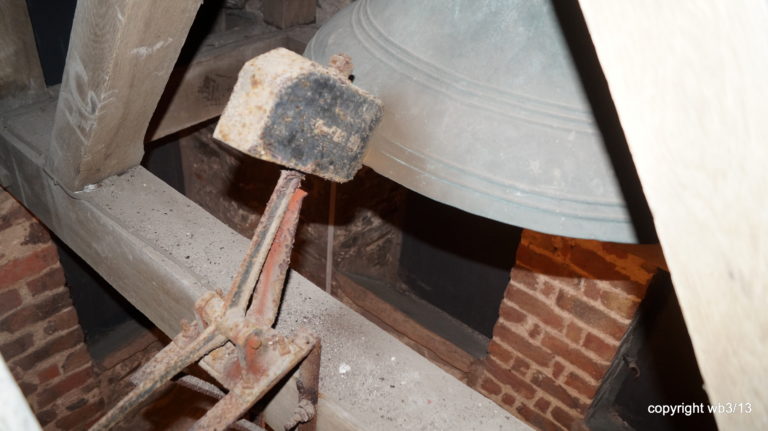
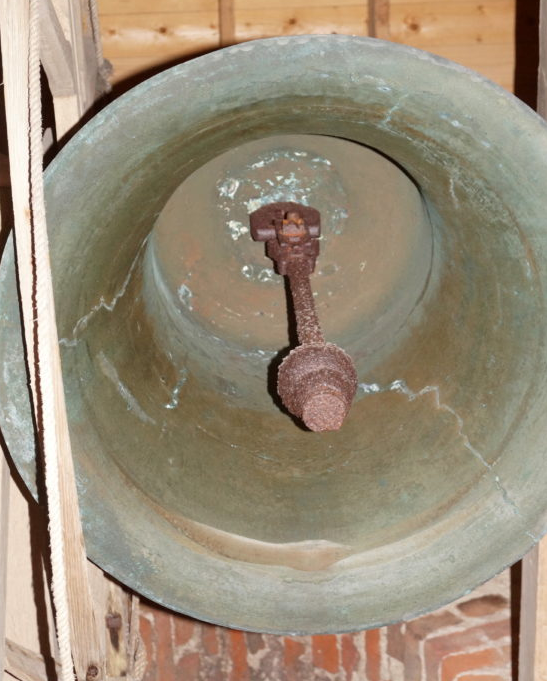
The Bell in Groomsport has an important history. It was cast by Thomas Mears and Son in 1843. This company is the oldest manufacturing company in Britain. After George Mears died, it became known as Whitechapel Bells , a famous company, as it cast the bell for Big Ben and also the Liberty Bell in Philadelphia.
Bell Photos – Walter D Burke
The Bell was delivered to Bangor Castle. A copy of the original receipt can be seen below.

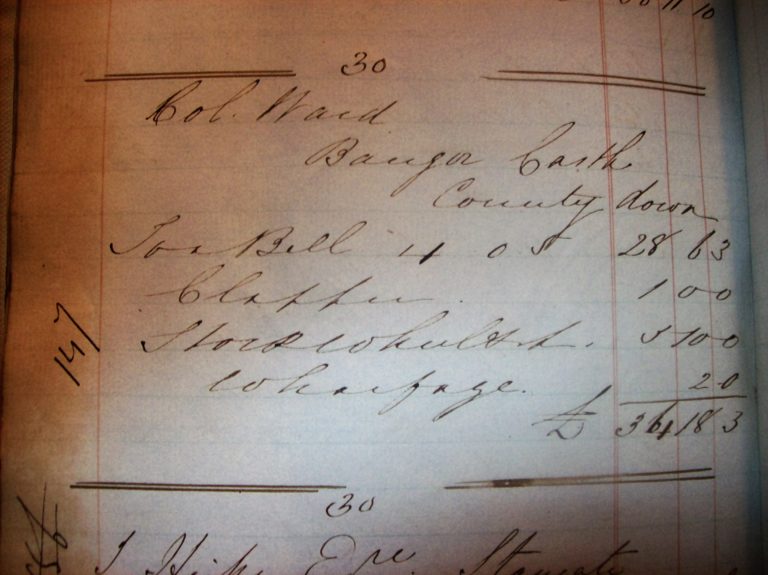
The Windows
The Stained Glass windows
As mentioned above, the window in the Chancel facing West, was made by Mayer of Munich. It features the Transfiguration. The window in the South Transept includes the arms of the Percival Maxwell family and in the North Transept, the arms of the united dioceses of Down and Dromore can be seen. The Good Shepherd window in the Nave, designed by the eminent Irish stained glass artist Kitty O’Brien, was installed in memory of Montague Gordon Weaving in 1959. The two windows in the South West Transept, made by Whitefriars of London, to a design by Denis O’D Hanna, are memorials to members of the Perceval-Maxwell family.
1.The West Face in Winter, showing the west window along with the Elizabeth and Dorcas Windows.
2. South Transept Window.
3. The Good Shepherd Window was designed by Irish Artist Kitty O’Brien. 4. North Transept Window.
5. The Elizabeth Window made by Whitefriers of London.
6. The Dorcas Window made by Whitefriers of London.
7. The Transfiguration Window made by Meyer of Munich.
Previous
Next
175 Years Celebration December 2017
Celebrating 175 years of Groomsport Parish Church
Tuesday 05 December 2017
Advent Sunday 2017, was a significant day in the life and history of Groomsport Parish as the congregation and guests celebrated the 175th anniversary of the building of the Church.
The 175th celebrations brought together the great, great, great grandson of Robert Perceval–Maxwell, Bill, and his cousin Norrys, as well as a previous Rector, Canon Derek Tyney and his wife Gwen. Also at the service of celebration and the Parish Lunch was Patrick Freeman, the son of another previous Rector, Revd George Freeman who died suddenly in 1944, and Mary Moore, the widow of Bishop Jimmy Moore who was Rector of Groomsport from 1969 to 1975.
The congregation was delighted to welcome the Archbishop of Armagh, the Most Revd Dr Richard Clarke who preached at morning worship.
The Parish is marking this significant milestone by undertaking a major programme of refurbishment in 2018, work that is supported by the Heritage Lottery Fund. It is hoped that this work will enhance this lovely little gem of a Parish Church, and that the ministry of the Church will carry on for another 175 years!
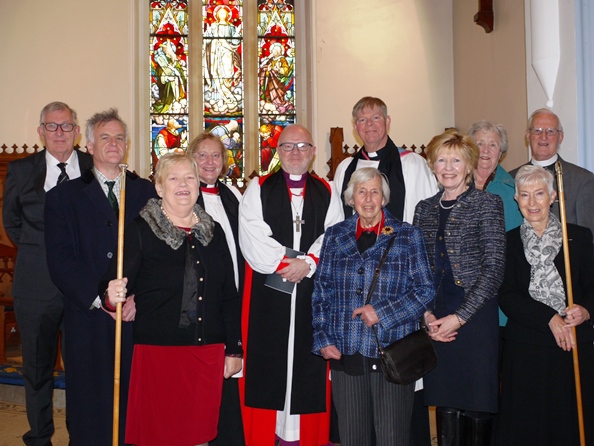
L–R: Patrick Freeman, Bill Perceval–Maxwell, Helen Parkinson (Peoples’ Warden), Revd Faith Cully (Assisting Priest) The Archbishop of Armagh, the Most Revd Dr Richard Clarke, Revd Duncan Pollock (Rector) Norrys Perceval–Maxwell, Lady Sylvia Hermon (MP for North Down), Gwen Tyney, Canon Derek Tyney, Hester Kelly (Rector’s Warden).
As published on the Down and Dromore Diocesan website 5 December 2017.
